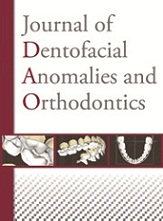Article contents
Are self-ligating brackets an advantageous alternative for non-extraction treatments?
Published online by Cambridge University Press: 02 September 2015
Abstract
The objective of this nonsystematic review of the literature is to determine whether or not self-ligating brackets are an equally effective alternative to traditional brackets for non-extraction treatments. The agreed upon criteria are indications for extractions, the biomechanical approach, the stability of the treatment results, the iatrogenic effects and the ergonomics.
The studies discuss arch expansion with the use of self-ligating brackets. One study mentions a lack of control of osseous management including tipping and buccal bone thickness in the lateral sectors. The mandibular incisor inclination that was obtained does not appear to be correlated to the type of bracket but rather to initial factors specific to the patient. We didn’t find any study dealing with the long-term stability of the results.
Regarding patients, self-ligating brackets do not reduce the pain, the number of extractions, the incidence of resorption or the risk for caries. Self-ligating brackets shortened the clinical time for an experienced practitioner but not the length of the time of comprehensive treatment and alignment. Some studies report an increase in cases of emergency. Finally, these brackets are more difficult to position.
- Type
- Research Article
- Information
- Copyright
- © RODF / EDP Sciences
- 1
- Cited by




